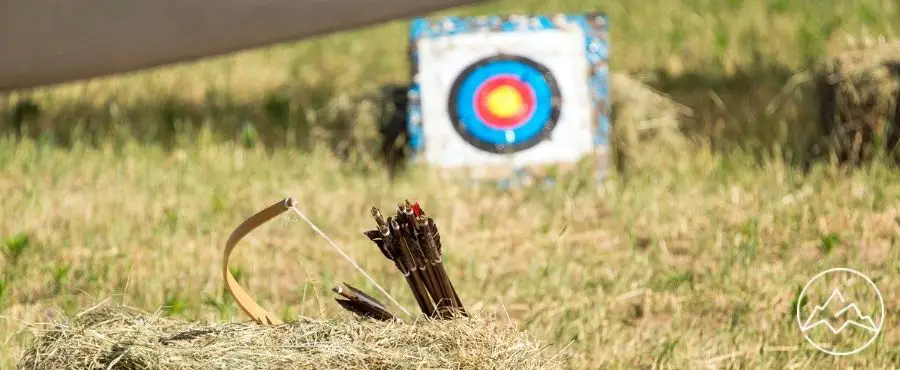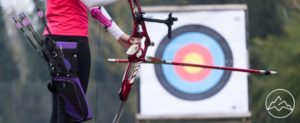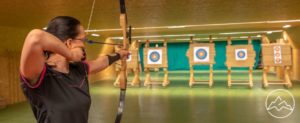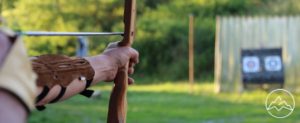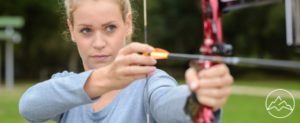Archery, known for its safety record, offers a thrilling and secure experience for enthusiasts. Surprisingly, experienced archers are three times less likely to sustain injuries compared to players of contact sports like volleyball or football. To ensure a safe and enjoyable archery experience, it is crucial to adhere to general safety rules and utilize appropriate equipment. These rules include maintaining awareness of one’s surroundings, refraining from shooting when others are in front, avoiding shooting arrows directly upwards, and keeping the bow pointed downwards when not aiming. Additionally, regularly inspecting equipment and avoiding dry firing the bow are vital safety measures. Archers can enhance safety by employing shooting aids like finger tabs, shooting gloves, mechanical release aids, armguards, thumb rings, and finger savers. When practicing at an archery range, it is essential to follow staff instructions, avoid running or horseplay, wear protective gear, and respect the shooting line. By embracing these safety guidelines, archers can confidently indulge in the art of archery, benefiting from exclusive content and valuable information within the archery community.
Key Takeaways
- Archery has a strong safety record compared to contact sports like volleyball or football.
- Important safety measures include regularly inspecting equipment and avoiding dry firing the bow.
- Safety guidelines at an archery range include following staff instructions and wearing protective gear.
- Using shooting aids such as finger tabs, shooting gloves, and armguards can help prevent injuries.
What is archery safety?
Archery safety involves adhering to general safety rules such as being aware of surroundings, not shooting when someone is in front of you, and keeping the bow pointed towards the ground when not aiming. Additionally, utilizing safety equipment like shooting/release aids, armguards, and thumb rings/finger savers is crucial. Following safety guidelines in archery is of utmost importance to ensure a safe and enjoyable shooting experience. Common injuries in archery include cuts, bruises, and strains. These injuries can be prevented by inspecting equipment before shooting, avoiding shooting directly upwards, and ensuring a clear path to the target. Wearing protective gear, such as armguards and shooting gloves, can also help minimize the risk of injuries. By following these safety guidelines, archers can stay safe and fully enjoy the sport.
General safety rules
Ensuring a clear line of sight to the target and inspecting equipment before shooting are key factors in maintaining a safe environment for participants in archery. Awareness plays a crucial role in archery safety, as it allows archers to be mindful of their surroundings and avoid potential hazards. It is important to always be aware of other individuals in the vicinity and refrain from shooting when someone is in front of you. Additionally, shooting arrows directly upwards should be avoided, as this can pose a risk to others. Common mistakes to avoid in archery safety include not keeping the bow pointed towards the ground when not aiming and failing to have a clear path to the target. By adhering to these general safety rules, archers can enjoy their sport while minimizing the risk of accidents or injuries.
Safety equipment
Armguards, shooting/release aids, and thumb rings/finger savers are examples of safety equipment commonly used in archery. These items play a crucial role in ensuring the safety of archers and preventing potential injuries. Here are four types of shooting/release aids commonly used in archery:
- Finger Tabs: These protective accessories are worn on the fingers to prevent injuries caused by the bowstring upon release. They provide a smooth surface for the string to slide against, reducing friction and discomfort.
- Shooting Gloves: Similar to finger tabs, shooting gloves protect the fingers from the bowstring. They offer a padded layer of protection and are often preferred by archers who find them more comfortable.
- Mechanical Release Aids: These devices are designed to improve accuracy and consistency by providing a mechanical means of releasing the bowstring. They reduce the risk of string slap and allow for a smoother release.
- Thumb Rings/Finger Savers: These are used in traditional archery styles that involve drawing the bowstring with the thumb or fingers. Thumb rings and finger savers protect the digits from the pressure of the bowstring and enhance shooting performance.
In addition to shooting/release aids, wearing protective gear, such as armguards, is essential in archery. Armguards protect the forearm from potential injuries caused by the bowstring during release. It is crucial to wear proper protective gear to minimize the risk of accidents and enjoy a safe archery experience.
Frequently Asked Questions
What are some common injuries that can occur in archery and how can they be prevented?
Common injuries in archery include shoulder strains, tendonitis, and finger injuries such as blisters or cuts. These injuries can be prevented by following proper form and technique, warming up before shooting, and using appropriate safety equipment such as armguards and finger tabs. It is crucial to maintain good posture, avoid overexertion, and take breaks when needed. Regular practice and conditioning exercises can also help in preventing injuries and improving overall performance in archery.
Are there any age restrictions or guidelines for participating in archery?
Age restrictions and safety guidelines are important aspects to consider when participating in archery. While there are no specific age restrictions for participating in archery, it is recommended that children under the age of 8 should be closely supervised by an adult. Additionally, it is crucial to follow safety guidelines such as being aware of surroundings, not shooting when someone is in front of you, and ensuring a clear path to the target. By adhering to these guidelines, participants can engage in archery safely and enjoyably.
How often should archery equipment be inspected and maintained?
Inspection frequency and proper maintenance are crucial aspects of archery equipment care. Regular inspection ensures that the equipment is in good working condition, reducing the risk of accidents. It is recommended to inspect archery equipment before each shooting session. This involves checking the bowstring for fraying or damage, examining the limbs for cracks or warping, and inspecting arrows for straightness and intact fletchings. Additionally, proper maintenance includes keeping the equipment clean, lubricating moving parts, and replacing worn-out components as needed.
Can you provide tips for properly storing and transporting archery equipment?
Properly storing and transporting archery equipment is crucial to maintaining its safety and integrity. When it comes to storing, archery gear should be kept in a cool, dry place to prevent damage from moisture or extreme temperatures. Equipment such as bows and arrows should be stored in cases or racks to protect them from accidental damage. When transporting archery equipment, it’s important to secure it properly to prevent any movement or damage during transit. Additionally, always follow local laws and regulations regarding the transportation of archery gear to ensure compliance and safety.
Are there any specific rules or guidelines for shooting in outdoor versus indoor archery ranges?
When it comes to shooting in outdoor versus indoor archery ranges, there are specific rules and guidelines that need to be followed. In an outdoor archery range, factors such as wind speed and direction must be taken into consideration, along with the presence of natural obstacles. On the other hand, indoor archery ranges provide a controlled environment with consistent lighting and no external elements to affect the flight of the arrow. It is important to familiarize oneself with the rules and regulations of each type of range to ensure a safe and successful shooting experience.
Conclusion
In conclusion, archery safety is of utmost importance to ensure a secure and enjoyable experience. By following general safety rules such as being aware of surroundings, avoiding shooting when someone is in front of you, and inspecting equipment before shooting, archers can mitigate the risk of accidents. Additionally, utilizing safety equipment like shooting aids and protective gear further enhances safety. For instance, a case study revealed that a novice archer was able to prevent a potential injury by wearing an armguard, which protected their forearm from the bowstring. By adhering to these guidelines, archers can fully immerse themselves in the sport while minimizing the chances of harm.

